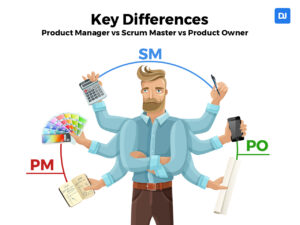Technical screening plays a key role in determining if a job seeker has what is needed for a specific position. This focused process aims to evaluate a candidate’s skills, ensuring they meet the main requirements before moving on to more detailed interviews.
Look, we all know the tech hiring game is tough. You’re not just looking for someone who can rattle off a list of programming languages. You want the real deal – senior developers who can solve complex problems, explain tricky concepts, and actually get excited about the tech they’re working with.
The problem is that the best ones are usually already employed. And it takes an average of 30 days to fill an IT job in the U.S., according to Workable. That’s a month of lost productivity! That’s where smart technical screening comes in. It’s not just a filter – it’s a tool to identify exceptional candidates efficiently, even those who aren’t actively job hunting.
For job seekers, understanding the technical screening process is also invaluable. It allows for better preparation and more effective showcasing of skills during the hiring process.
Our guide will help you improve your technical screening process, from avoiding common pitfalls to utilizing efficiency-boosting tools. You’ll learn how to balance technical skills with cultural fit and prepare for remote hiring, ultimately bringing top talent onto your team.
What is Technical Screening?
Technical screening is a pre-vetting process to evaluate a candidate’s technical skills, knowledge, and problem-solving abilities. It takes place before moving forward with more intensive interviews or practical assessments.
In essence, technical screening helps employers filter out candidates who don’t meet the basic technical requirements for a role, saving time and resources in the long run. This process can take various forms, from online coding tests, multiple-choice questions, and phone calls to brief phone interviews with a technical team member.
Common ways to screen candidates include coding tests, looking at portfolios, and technical chats. These methods help spot how well someone can tackle real-world problems, work with relevant tech, and fit into the fast-moving world of a tech team.
In today’s tough market, where time matters and remote teams are becoming common, a well-tuned technical screening process makes sure the best candidates move forward. By using a smoother approach, you can trim down extra steps and bring the right talent on board quicker, helping your team stay productive and on track.
Is Technical Screening the same as the Technical Interview?
The difference between technical screening and technical interview is that the former has a broader scope, ensuring a candidate’s fit to a job description, while the latter digs deeper into their capabilities and cultural fit.
Technical screening acts as one of the first hurdles to check a candidate’s basic tech skills. It’s a faster, more automated step that includes coding tasks, homework assignments, or short video calls to verify a candidate’s core knowledge. It shrinks the number of candidates from the start.
On the other hand, a technical interview digs deeper and zeroes in on tricky problem-solving, system design, and how well a candidate can handle real-world projects. These interviews last longer and often involve coding on whiteboards or coding together to assess a candidate’s advanced tech skills and how well they’d fit in with the team.
Why Should You Screen Test Your Tech Candidates
Screen testing your tech candidates is essential for making better hiring decisions based on real skills. Instead of relying on resumes or interviews alone, technical tests give you solid data to compare candidates.
According to the Bureau of Labor Statistics, in March 2025, there were 7.2 million job openings, and 5.4 million workers were hired. If we assume 20 million job seekers (since the COVID pandemic), and each one sends 50 applications per month (using job application bots even to job positions they do not fit the requirements), that makes around 1 billion applications per month.
How can your company handle these massive applications? Well, the first step is using an ATS that automatically blocks automated applications. But even so, some might pass the filter.
Here enters technical screening. It saves your time by filtering out unqualified applicants early, allowing your team to focus on those who actually meet the job requirements. It also improves the overall quality of your hires and helps reduce turnover by ensuring you bring on people who are not only skilled but also a good long-term fit for your company.
How to conduct Technical Screening?
To conduct technical screening, you must structure your process to do two things: eliminate candidates that don’t fit the job description and let potential candidates who might not fit the full job description, but seem otherwise promising and fit the basic requirements.
1. From Job Description to Competency Model
Here is a harsh truth. You can’t know a person by just talking to them for five minutes. You can’t just figure out if a person is a better employee than another by making a phone call and asking a few questions. But you can make assumptions.
This is why we make job descriptions: each one of the requirements is an educated guess on what the perfect employee should have. The more requirements the job description has, the less likely you will find someone who fits all the requirements (unless you are effectively headhunting potential employees with us).
To identify a good employee who goes beyond a job description with diminished bias, conduct a thorough job analysis to identify the most critical, role-related competencies, as well as universal competencies that align with the organizational culture.
This translates a generic job description into a competency model that will allow you to understand your candidate best.
2. Choose a Screening Format
The most common formats include phone screening, live coding interviews, take-home challenges, and system design interviews, each offering a distinct set of advantages and disadvantages.
| Format | Strengths | Weaknesses |
| Phone Screening | A quick and efficient way to narrow down a large pool of candidates | Limitations in assessing certain skills and establishing genuine rapport, a lack of non-verbal cues |
| Live Coding | Time-efficient, provides unfiltered insight into real-time problem-solving and collaboration. | Stressful for candidates, it can lead to false negatives, may favor speed over a methodical approach. |
| Take-Home Challenge | Highly representative of real work, showcases code quality and independent problem-solving skills. | Time-consuming for candidates, can deter applicants, and carries a risk of external assistance. |
| System Design | Assesses a candidate’s ability to design complex, scalable systems and justify architectural decisions. | Not suitable for junior candidates, requires a highly skilled interviewer. |
Combine these methods in a multi-stage funnel, with each stage building upon the signal from the last to mitigate the weaknesses of any single approach.
3. Live Interviewing
A live interview, whether for coding or system design, is best approached as a collaborative exercise. The process should begin with a warm introduction where the interviewer clearly explains the format and expectations to put the candidate at ease.
Before writing any code or drawing any diagrams, the candidate should be guided to ask clarifying questions to ensure they fully understand the problem’s scope and constraints. This initial stage is crucial for demonstrating a candidate’s attention to detail and their ability to avoid assumptions.
During the session, the interviewer should encourage the candidate to “think aloud” and narrate their thought process. It provides an invaluable window into their problem-solving approach and their cognitive model, allowing the interviewer to assess their reasoning rather than just their keystrokes. Focusing on process over a perfect solution is what truly separates a high-quality screening process.
4. Evaluating Results
The final phase of technical screening focuses on objective evaluation. This is where a standardized rubric becomes the most powerful tool for mitigating bias and ensuring fairness in the hiring process.
A rubric transforms the subjective art of interviewing into a data-driven science by providing a consistent framework for assessment across all candidates. This allows the hiring team to turn subjective impressions into objective, data-driven scores, which provides a legally defensible justification for hiring decisions.
A functional rubric is not a simple checklist; it is a Behaviorally Anchored Rating Scale (BARS). It should contain 3-5 key competencies (for example, Problem-Solving, Technical Competency, Communication, and Testing), with a numerical rating scale (for example, one to five stars) for each.
Each score must be tied to a specific, observable behavior, rather than a vague impression. For instance, a candidate who scores a “Strong Hire” on Problem Solving does not just “seem smart” but rather “understands the problem quickly, comes up with an optimized solution, and does not require any major hints”.
Rubric Sample
By defining what each score looks like in terms of concrete actions, a rubric ensures that every interviewer is measuring against the same objective standard. Here is an example of a rubric:
| Competency | Score 1: Strong No Hire | Score 2: Leaning No Hire | Score 3: Leaning Hire | Score 4: Strong Hire |
| Problem Solving | Unable to solve the problem; the approach was disorganized and incorrect. | Showed only some basic problem-solving signals, failing to achieve the rest. | Achieved all basic signals but lacked time for advanced ones. | Achieved all basic signals and most advanced ones effortlessly. |
| Communication | Stayed silent or could not communicate with any clarity; difficult to follow the thought process. | Communication was insufficient or disorganized. | Communication was clear but required follow-up questions to understand the full thought process. | Communicated approach, rationale, and trade-offs clearly and constantly. |
| Technical Competency | Could not produce a working solution; major syntax errors. | Struggled to produce a working solution; multiple syntax errors and poor use of language paradigms. | Produced a working solution, but with some difficulty in translating the approach to code. | Translated solution to working, bug-free code with clean, straightforward implementation. |
| Testing | Did not test code against typical cases; missed glaring bugs. | Tested code, but did not handle corner cases or correct identified bugs. | Had some difficulty identifying all relevant corner cases. | Tested code against typical and corner cases; identified and self-corrected bugs systematically. |
5. Provide Feedback
Providing feedback to candidates is another aspect of technical screening that is often forgotten. Candidates take time and effort in the interviewing process, so rather than just ghosting them or saying they are not moving forward, you can enhance the candidate experience by giving brief feedback on why they were not selected.
Candidate experience says a lot about your company. If candidates have an unpleasant experience, they will likely share it. According to LinkedIn, about 72% will share their experience online, which can impact your brand’s online reputation.
This back-and-forth feedback process also works for remote hiring. When you give clear and helpful feedback, even in a remote setup, it helps keep your company’s image positive and makes candidates more interested in working with you.
Common Pitfalls in Technical Screening (and How to Avoid Them)
When you’re doing tech screenings, it’s easy to get stuck in ways that can slow down hiring or lead to picking the wrong people. By spotting and fixing these common problems, you can speed up your hunt for talent and make sure you’re bringing the right folks on board.
Here’s a look at the usual hiccups in tech screening and some down-to-earth fixes to get past them:

By tackling these problems, you’ll make your technical screening better and boost your odds of finding great candidates.
Key Technical Screening Interview Questions
A good technical screening process does more than just check coding skills; it looks at a candidate’s overall technical abilities, how they solve problems, and their grasp of key ideas.
Here are some main areas to focus on when creating technical screening questions:
Problem-Solving Skills
Any tech job needs problem-solving skills, and technical screening questions should show this. These questions evaluate how candidates tackle challenges and think when under pressure.
Examples:
- “Tell me about the main parts of an algorithm.”
- “If your code gives an error, how do you fix it?”
- “What would you do to speed up a system that’s running?”
These questions show technical skills and give you a peek into how the candidate solves problems and uses what they know.
System Design and Architecture (Entry-Level)
When it comes to more complex jobs or applicants seeking roles that need design expertise, it’s useful to include small-scale system design questions. While in-depth architecture talks might be saved for subsequent interviews, screening questions can still evaluate their grasp of fundamental design concepts.
Examples:
- “How would you create a basic URL shortening service?”
- “Can you describe what RESTful APIs are and how people use them?”
- “What sets monolithic architecture apart from microservices architecture?”
These questions give you insight into how well the candidate grasps essential architecture ideas, which play a crucial role in scaling and keeping systems reliable.
Knowledge of Tools and Methods
It’s crucial to know how comfortable the candidate is with key tools and methods to make sure they fit with your team’s way of working. Questions about software development practices, cloud tech, and infrastructure will help you figure out if the candidate can work well with your tech setup.
Examples:
- “What tech stack do you know best, and how have you used it in your previous work?”
- “Have you worked with cloud platforms like AWS or Microsoft Azure? If yes, tell us about a project where you used these services.”
- “What project management method do you like most, and why? How have you used it in your past jobs?”
To learn more, take a look at our React JS interview questions or C# interview questions.
Real-World Problem Solving
To recreate real-world situations, ask job seekers how they’d deal with actual problems or mention specific experiences. Questions about solving real-world issues give you a glimpse into how they put their know-how to use in everyday cases.
Examples:
- “Share a time when you fixed a big performance problem. What steps did you take?”
- “If you had to make an API work better with more traffic, what would you do?”
- “Tell us about a time you worked with others to solve a critical issue. How did you make sure it turned out well?”
When you customize your technical screening questions to match your company’s requirements, you assess the candidate’s technical skills and get a better idea of how they handle tasks, fix problems, and work with others. To get more insights on entry-level jobs, you can check out our entry-level Java developer interview questions or software developer interview questions.
By mixing these groups, you’ll build a more dependable screening method that quickly spots the best-qualified candidates to evaluate further.
Conclusion
In sum, a good technical screening process goes beyond finding someone who knows how to code. It’s about ensuring your candidates fit your company’s specific requirements—both in terms of skills and culture. When you use best practices like structured tests, adaptable evaluations, and real-world problem-solving tasks, you boost your chances of hiring the right people quickly and with fewer mistakes.
Refine your screening process continuously. Take feedback into account, adapt to new tech, and keep an eye on industry shifts. This method not only saves time but also improves the quality of your hires, helping you create a stronger, more resilient team.
If you have decided that screening, vetting, and the hiring process are too much for your company right now, that’s okay. Hiring managers and business owners have their hands full too often. Here is my proposal for you.
Our 3-Tier Approval Process (TAP) delivers meticulously vetted candidates, starting from a detailed client needs assessment through strategic talent sourcing and candidate review. With our method, we ensure that you’ll have the perfect match in both technical skills and company culture.
No hidden fees, no fine print. The value in the contract is what you’re gonna spend. And a three-month guarantee of all your money back, no questions asked.Find out more about our approach by booking a discovery call!





